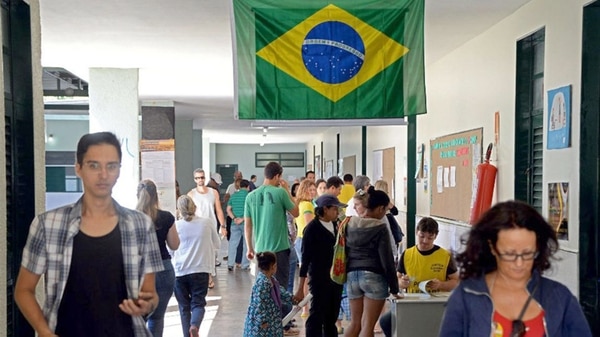Voters’ biometric data collection increased despite the pandemic
By Wellton Máximo
Female, graduated from high-school, aged 35 to 59 is the profile of the majority of electors voting in the 2020 municipal elections, according to the Superior Electoral Court. This year, 147,918,483 people are apt to vote, up 2.66 percent from the municipal elections in 2016.

These voters will elect new mayors and city councilors across 5,569 municipalities on November 15. Electors in the Federal District as well as in Fernando de Noronha will not participate, as these locations have no mayor. Brazilians overseas will also not be able to vote, as voting from abroad is only an option available at general elections, held every four years.
Biometrics
Due to the COVID-10 pandemic, electoral authorities removed biometrics as a means of identification for this year’s elections. Nonetheless, the collection of biometric data continued rising in 2020. In December last year, a little fewer than 113.5 million people did the procedure—76 percent of all voters. In August this year, when the term for applications for municipal elections was over, 117,594,975 people had been identified biometrically, 79.5 percent of all voters.
Profile
In a gender-based classification, women add up to 77,649,563 electors (52.49%) of the total. Men total 70,228,457 voters (47.48%). Another 40,457 people did not state their gender, amounting to 0.03 percent of the electorate. A total of 9,985 people will use their chosen name, as authorized by the electoral court in 2018.
Regarding education, most electors stated they have graduated from high school—37,681,635 (25.47%). The group with the lowest level of schooling—primary school not concluded—comes second, 35,771,791 (24.18%), followed by those with high school not concluded—22,900,434 (15.48%). Only 10.68% of the electorate (15,800,520) people have a university degree.
A total of 1,158,234 electors declared they have some form of disability in 2020, up 93.58 percent from 598,314 people who had stated they suffered from a physical impairment in 2016. According to the electoral court, the increase does not necessarily represent a growth in the participation of disabled people, as figures are based on statements made by the citizens themselves while registering.
States and municipalities
Compared to 2016, the state with the sharpest increase in the number of voters is Amazonas, where the amount of active electors went up 7.88 percent to 2,503,269. The only state with an overall decline in this number was Tocantins, down 0.17 percent in the last four years, from 1,037,063 to 1,035,289.
São Paulo—home to the country’s largest electorate—has 33,656,294 electors apt to vote in 2002, up 2.69 percent from 2016. São Paulo city is the state’s municipality with the highest number of electors, 8,986,687 altogether. The country’s lowest number of voters is to be found in Araguainha, in Mato Grosso state, with 1,001 voters.
Non-compulsory voting
In Brazil, voting is mandatory for anyone older than 18, but there are exceptions. At these elections, 14,538,651 people may choose not to vote, like voters aged 16 through 17 and elders aged above 70. Of these, 1,030,563 are young, 8,784,004 are aged between 70 and 79, and 4,658,495 are between 80 and 99 years old. There are 65,589 elders aged over a hundred apt to vote in 2020.






